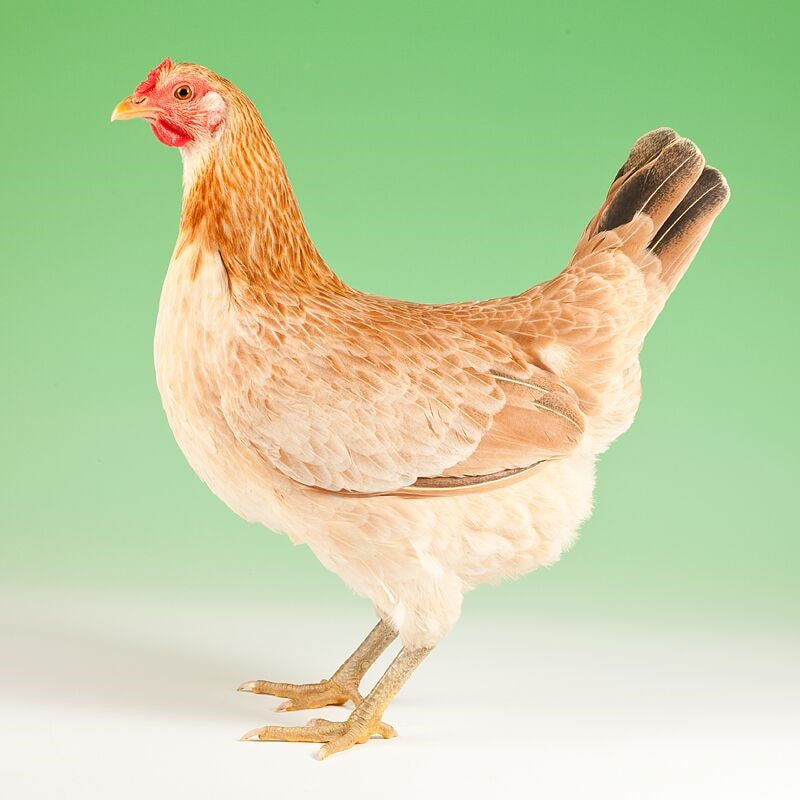The Marsh Daisy was created around the 1880s by a Mr J. Wright of Southport, using an Old English Game Bantam cock crossed on to cinnamon Malay hens. A cock produced from that cross was mated to hens which were a black Hamburgh/white Leghorn cross. A white rosecombed male produced from that cross was in turn crossed back to the hens of the Hamburgh/Leghorn cross. No other blood was introduced until 1913 when a Mr C. Moore purchased some hens from Mr Wright and crossed them on to a pure Pit Game cock. Desiring to secure the white lobe and willow leg stock, it was crossed with Sicilian Buttercups. The above were the basic ingredients for what we now know as the Marsh Daisy, a moderate layer and good forager. There are no known bantams in this breed.
General characteristics: male
Carriage: Upright, bold and active.
Type: Body long, fairly broad, especially at the shoulders, with square and blocky appearance. Almost horizontal back. Well rounded and prominent breast. Full tail, carried at an angle of 45° from the vertical.
Head: Skull fine. Beak short and well curved. Eyes bold and prominent. Comb rose, medium size, well and evenly spiked, finishing in a single leader 1.25 cm (½ in) long in line with the surface, not as high as the Hamburghs or following the nape of the neck as the Wyandottes. Face smooth. Earlobes almond shaped. Wattles of fine texture and in keeping with the comb.
Neck: Fairly long, fine. Hackle flowing and falling well on the shoulders to form the cape.
Legs: Moderately long. Shanks and feet light boned, free from feathers. Toes, four, well spread.
Plumage: Semi-hard, of fine texture; profuse feathering to be deprecated.
Female
The general characteristics are similar to those of the male, allowing for the natural sexual differences.
General characteristics: male
Carriage: Upright, bold and active.
Type: Body long, fairly broad, especially at the shoulders, with square and blocky appearance. Almost horizontal back. Well rounded and prominent breast. Full tail, carried at an angle of 45° from the vertical.
Head: Skull fine. Beak short and well curved. Eyes bold and prominent. Comb rose, medium size, well and evenly spiked, finishing in a single leader 1.25 cm (½ in) long in line with the surface, not as high as the Hamburghs or following the nape of the neck as the Wyandottes. Face smooth. Earlobes almond shaped. Wattles of fine texture and in keeping with the comb.
Neck: Fairly long, fine. Hackle flowing and falling well on the shoulders to form the cape.
Legs: Moderately long. Shanks and feet light boned, free from feathers. Toes, four, well spread.
Plumage: Semi-hard, of fine texture; profuse feathering to be deprecated.
Female
The general characteristics are similar to those of the male, allowing for the natural sexual differences.
Please contact the breed registrar for more information - [email protected]


